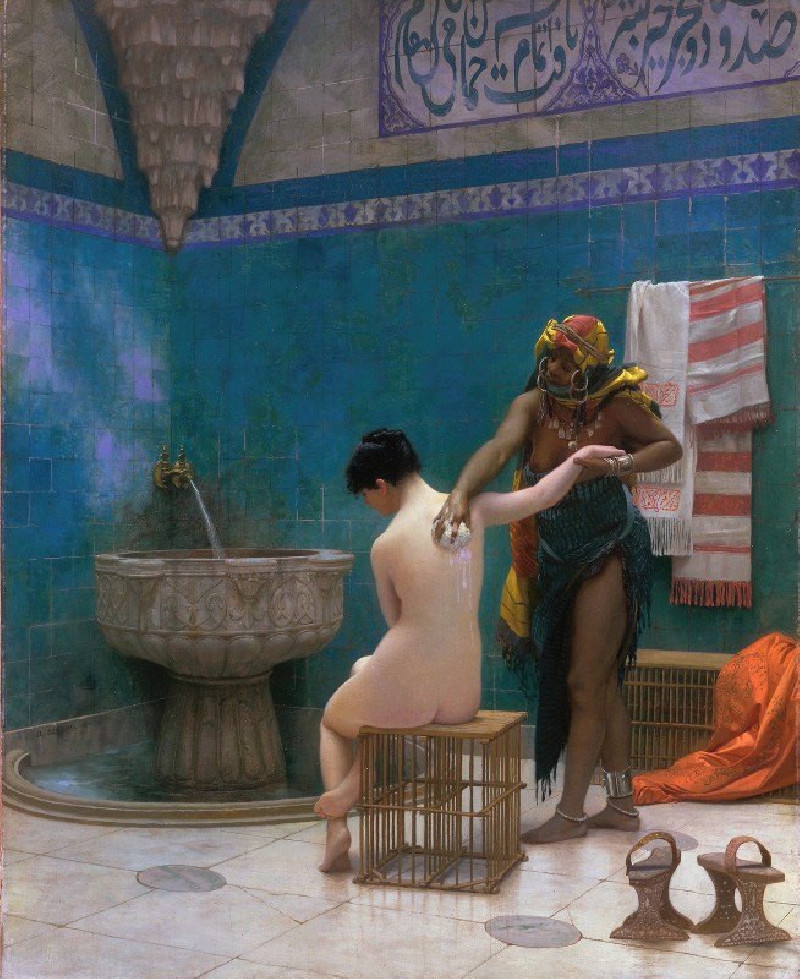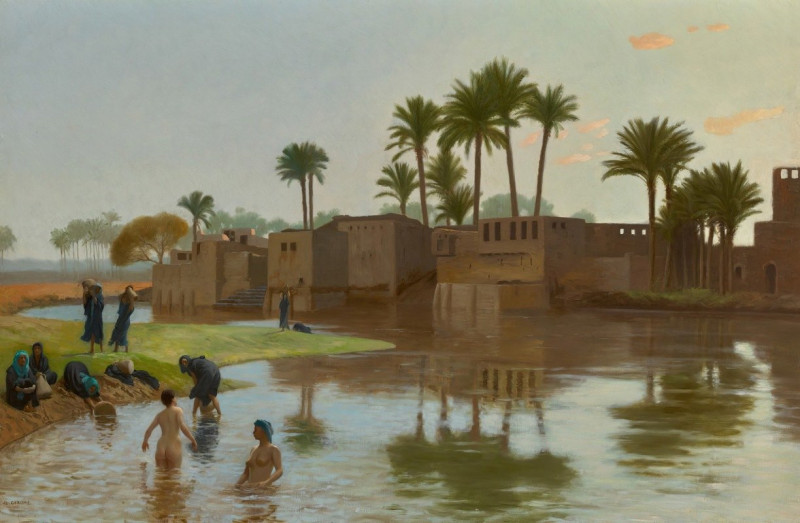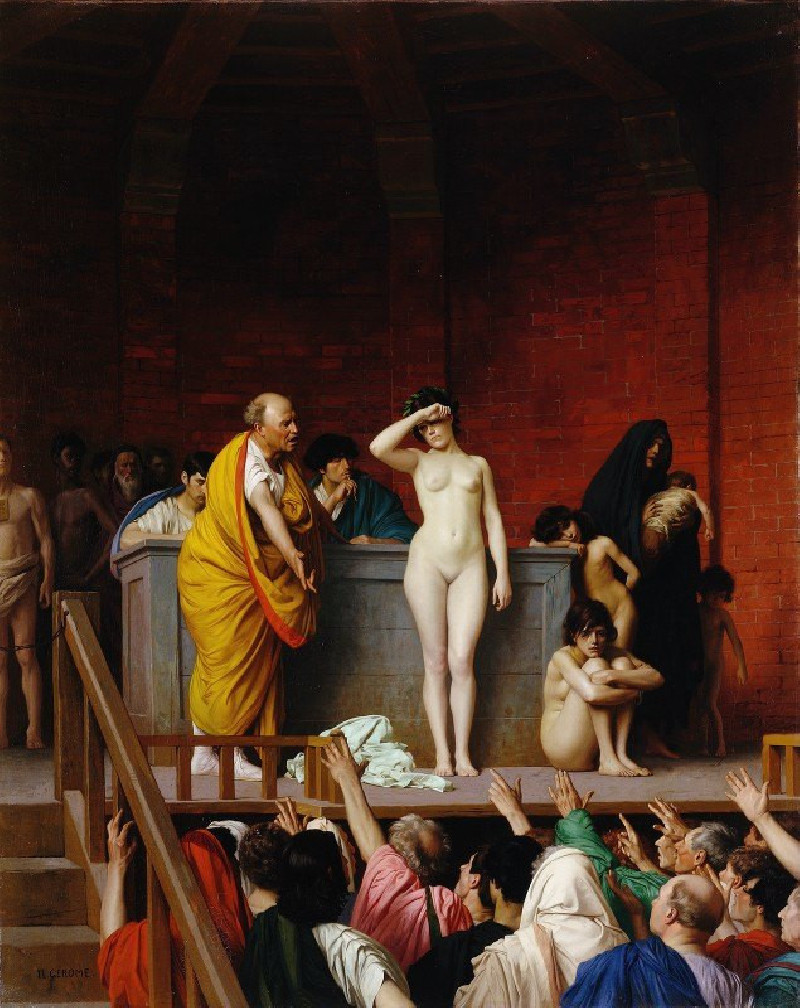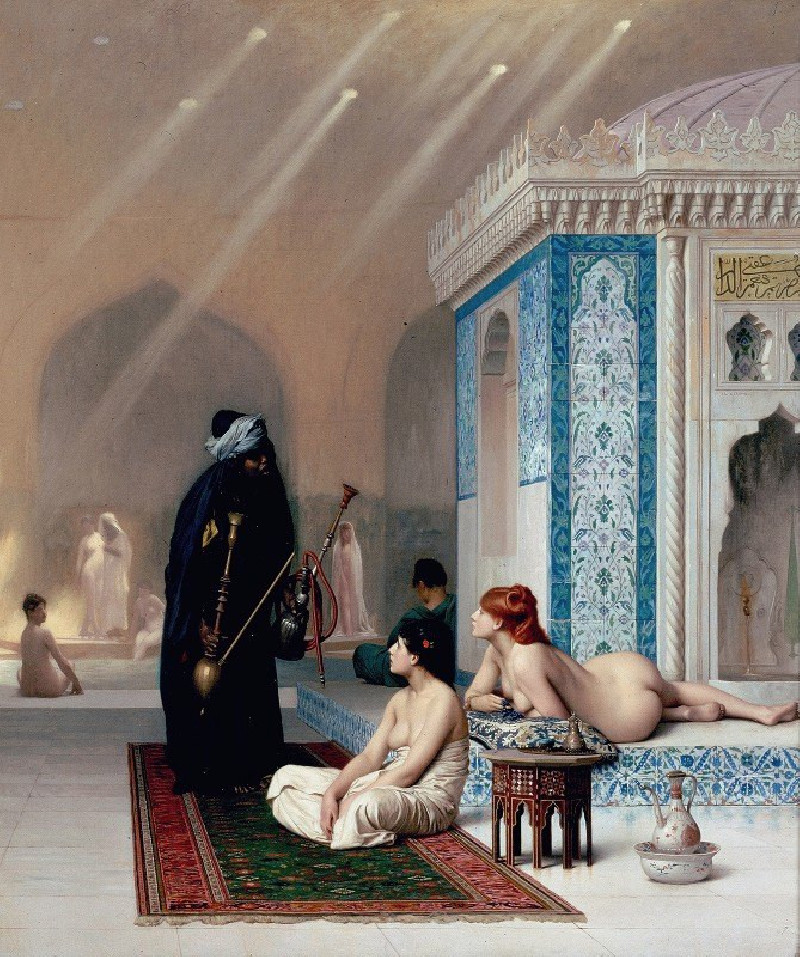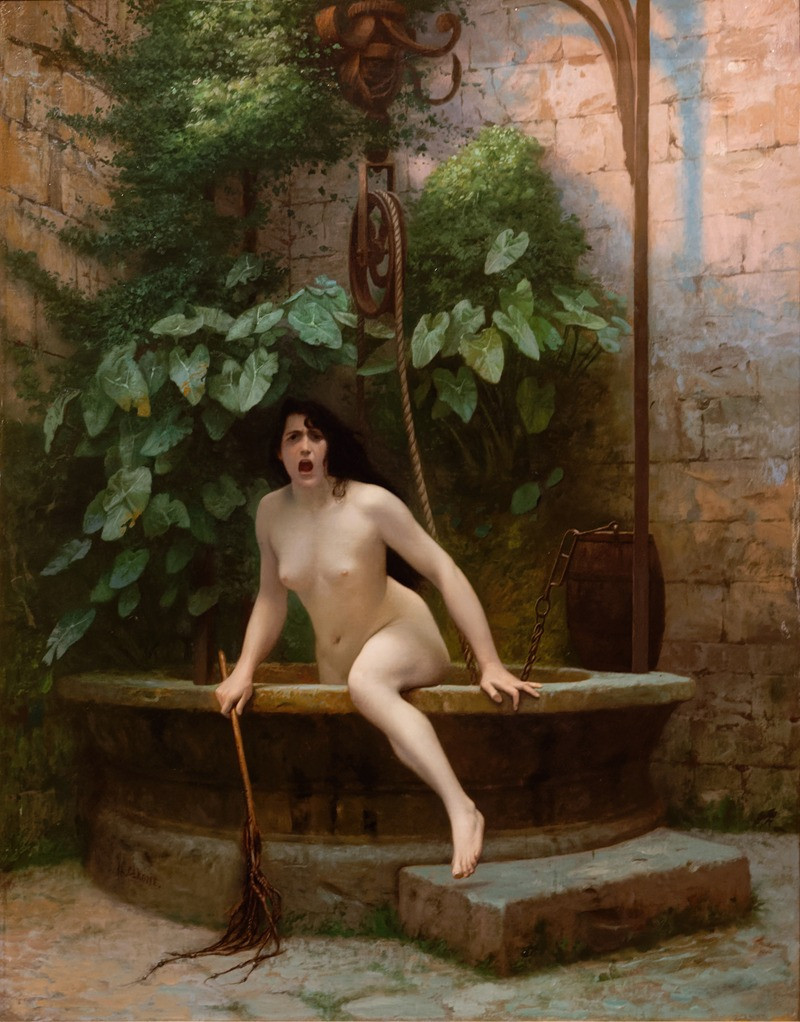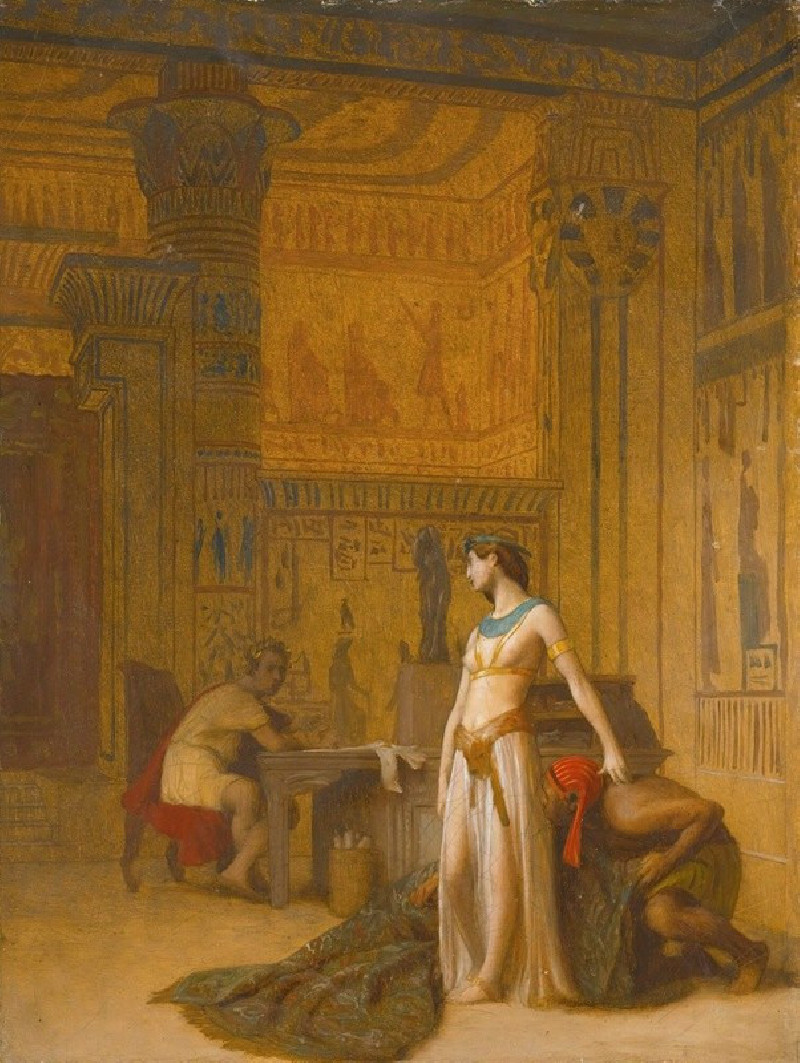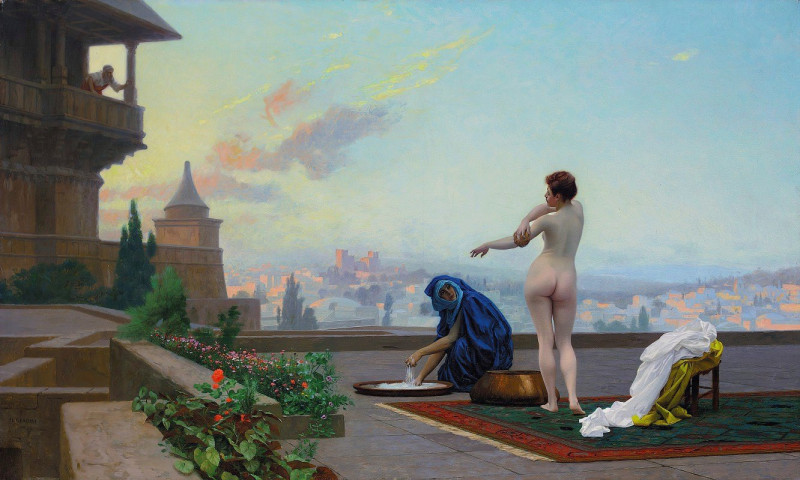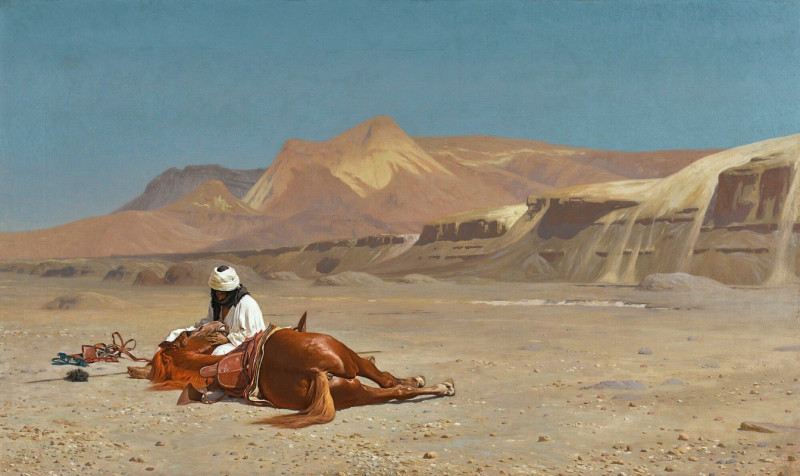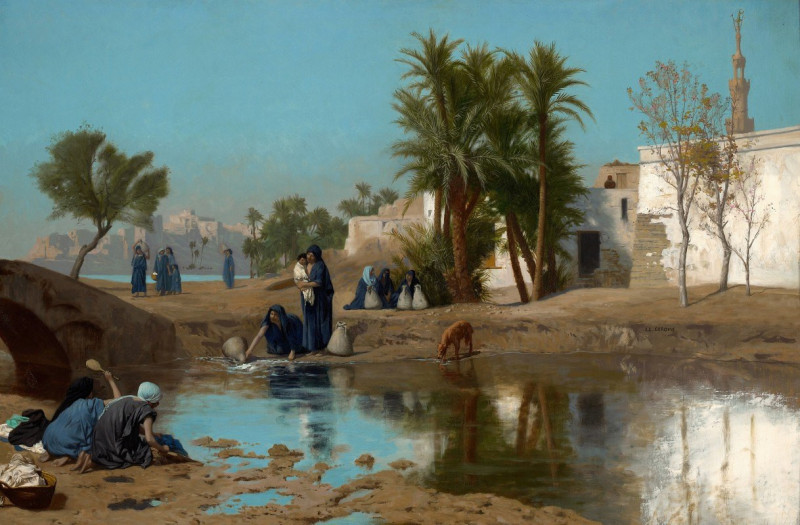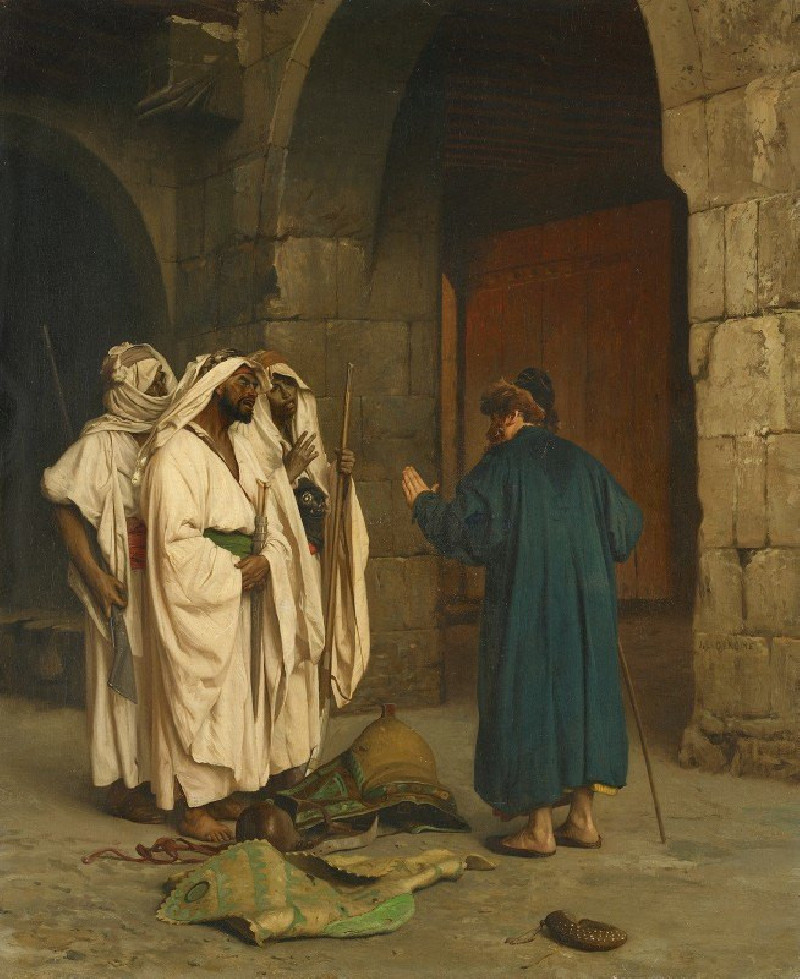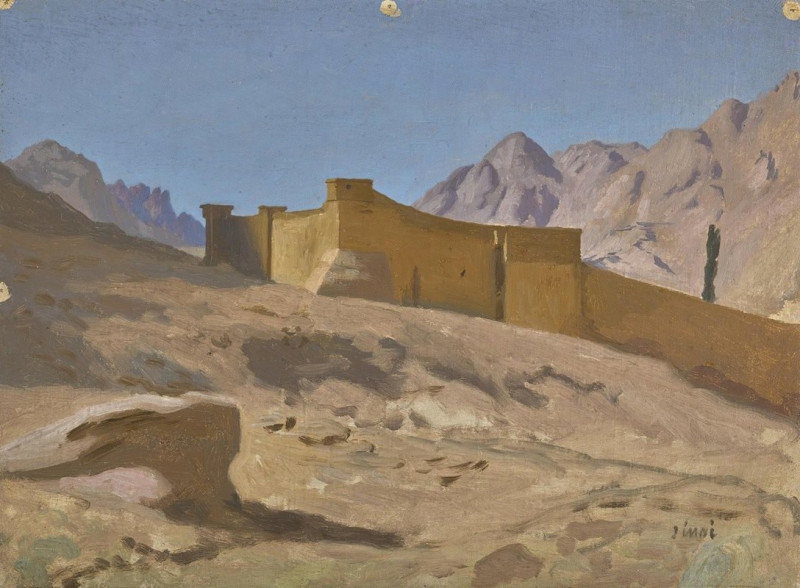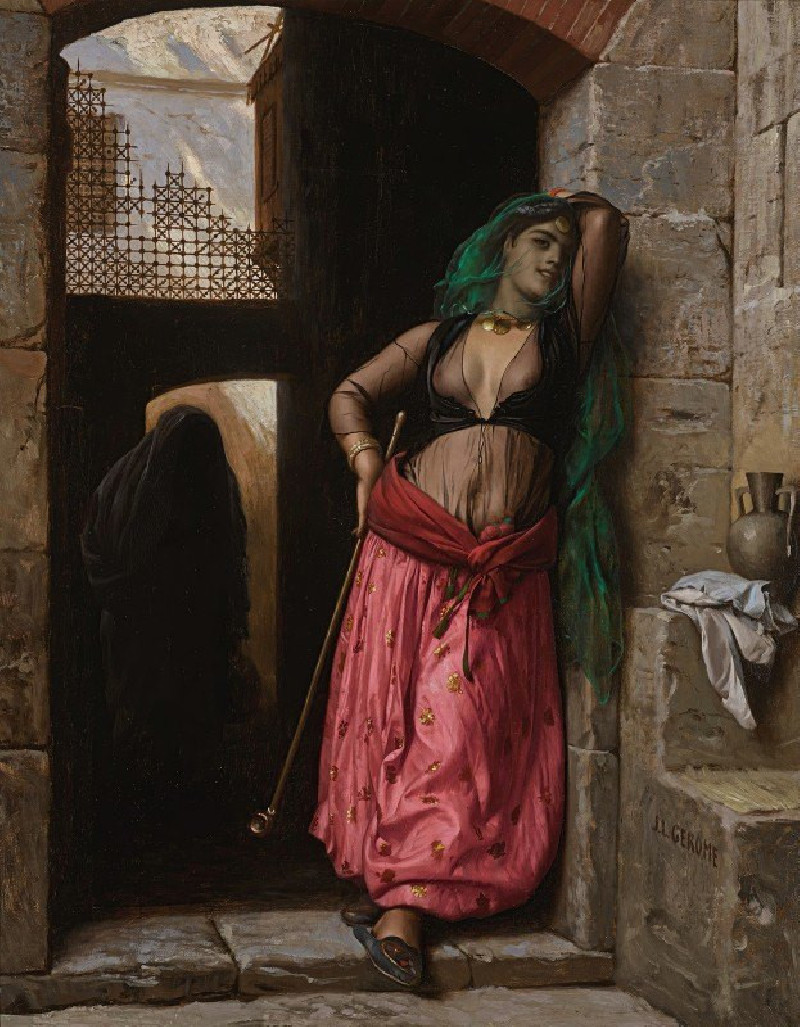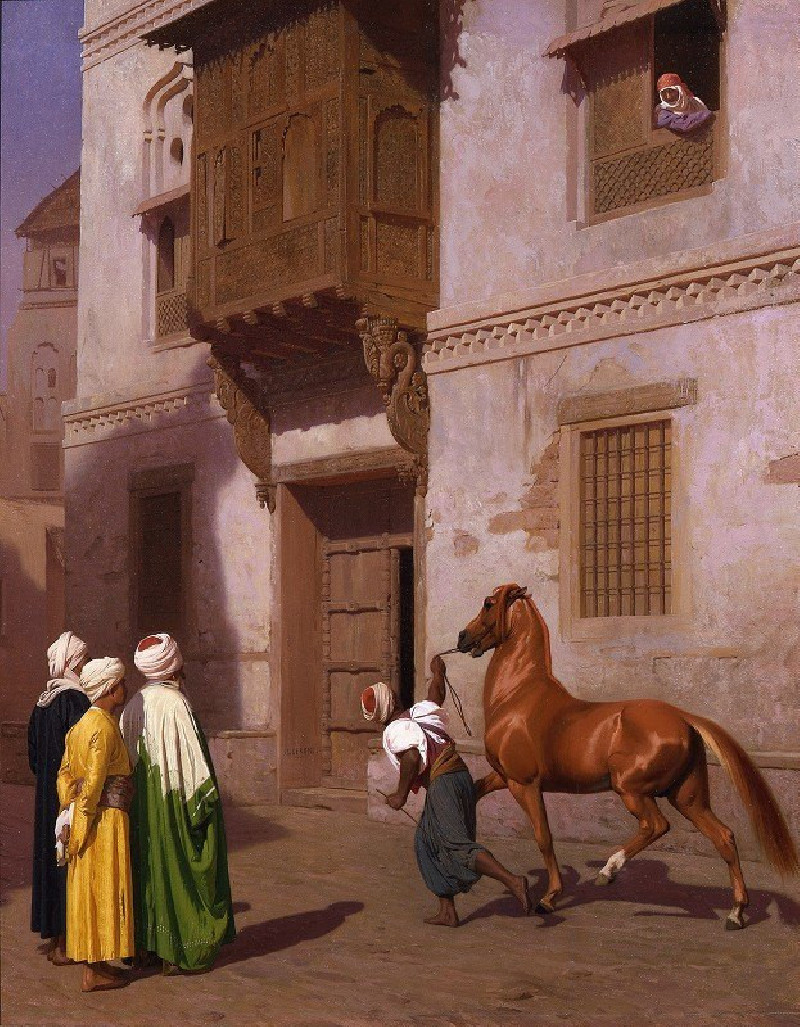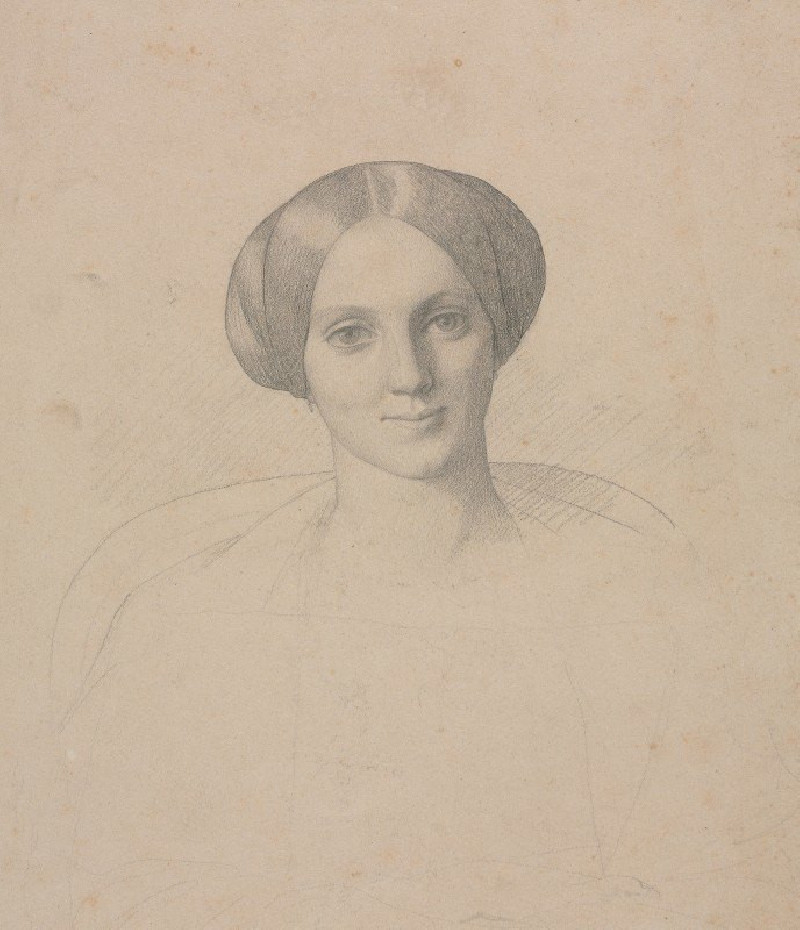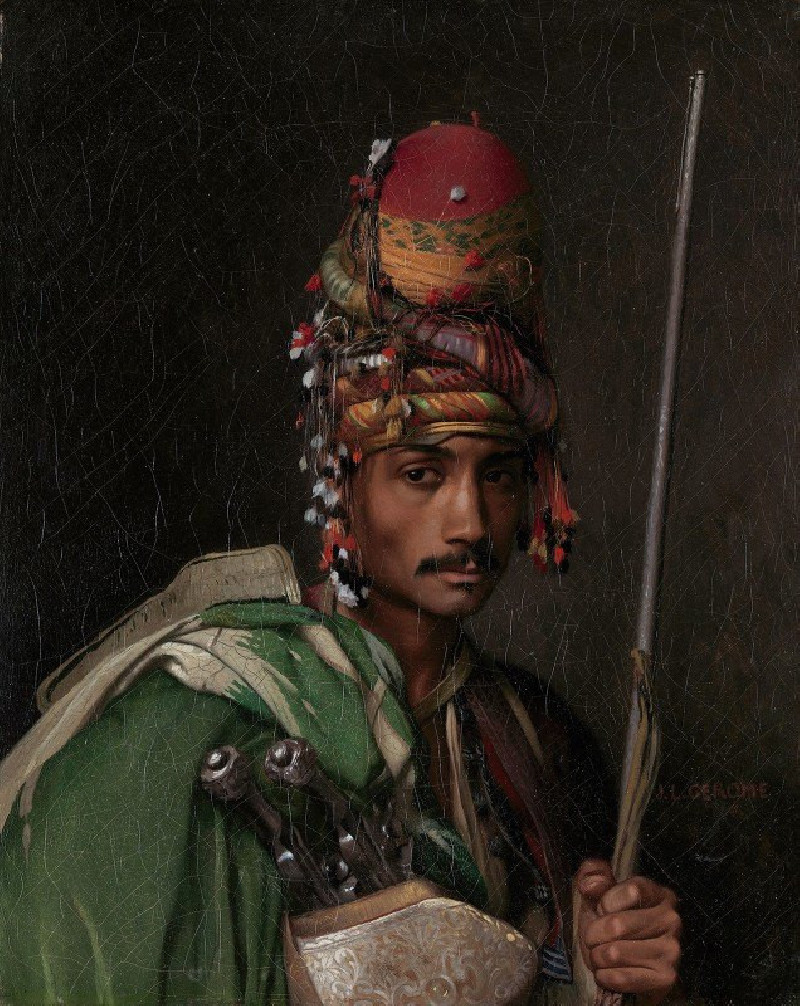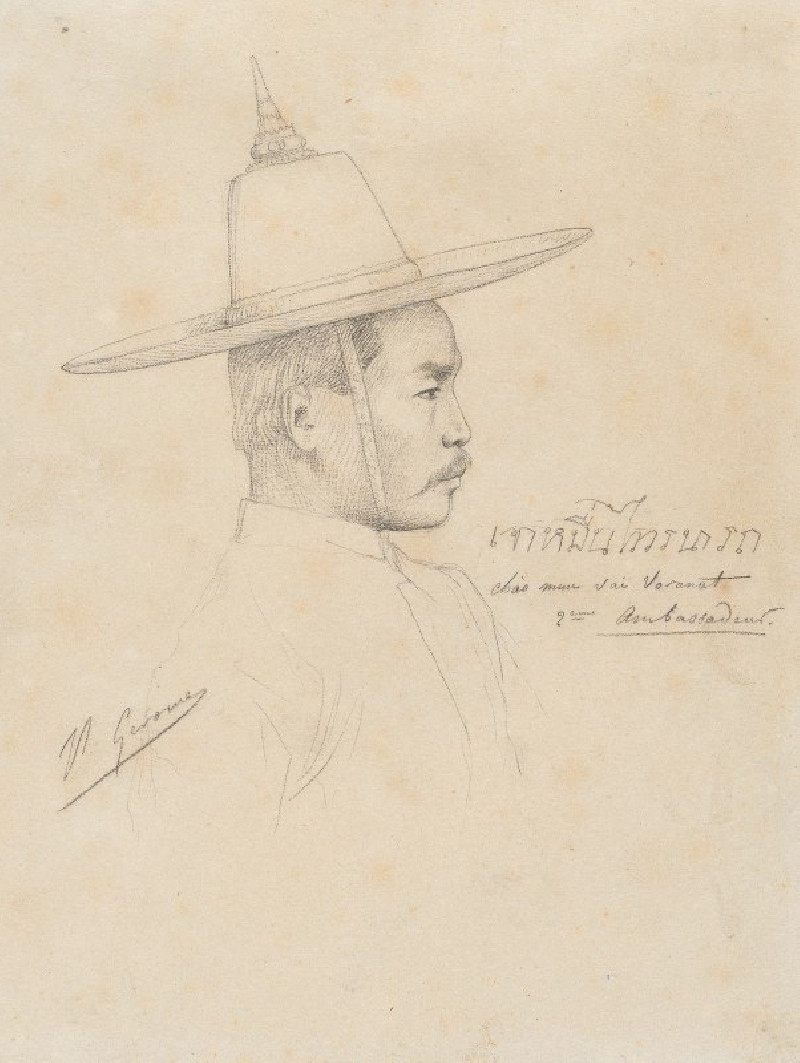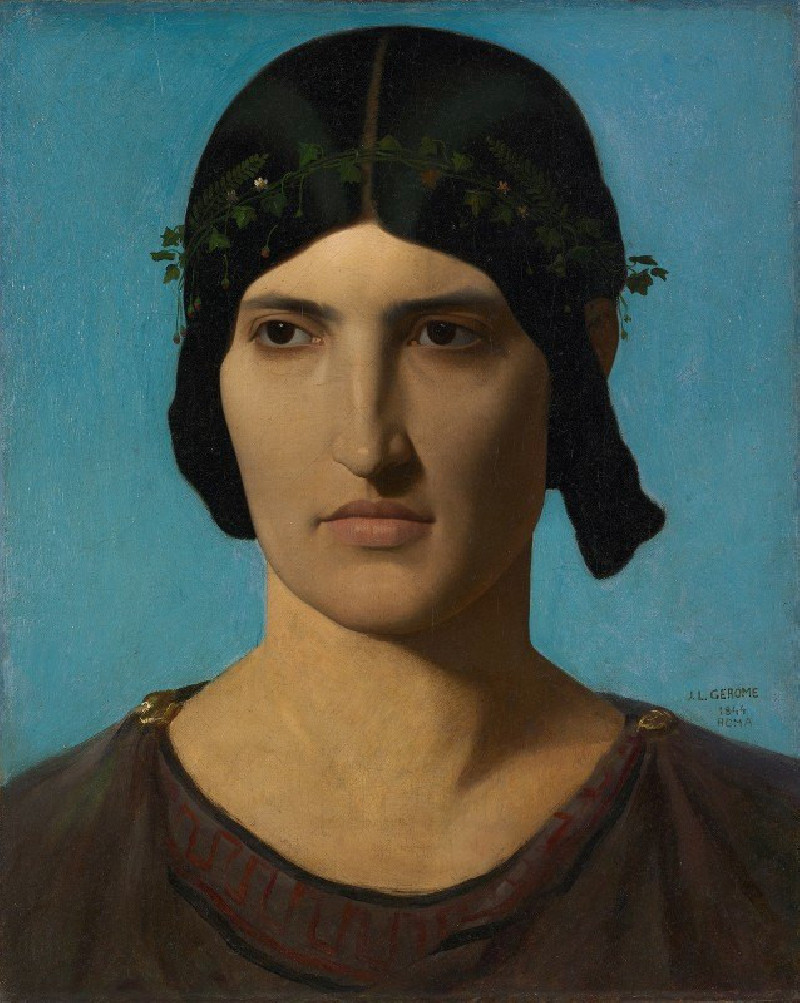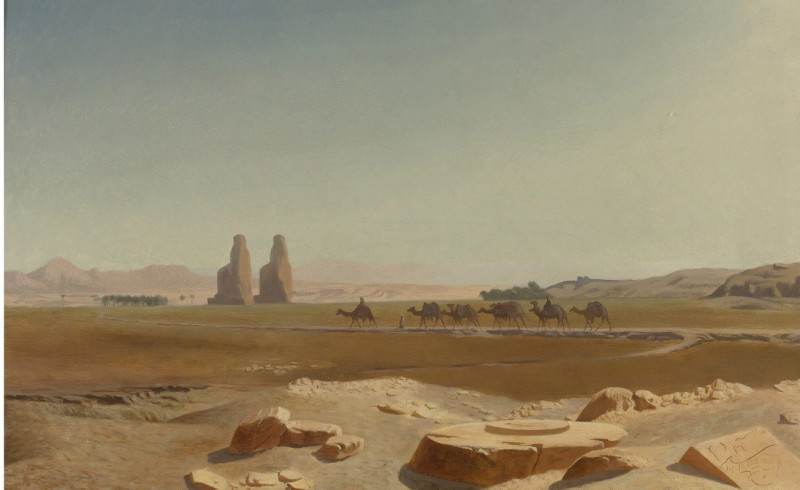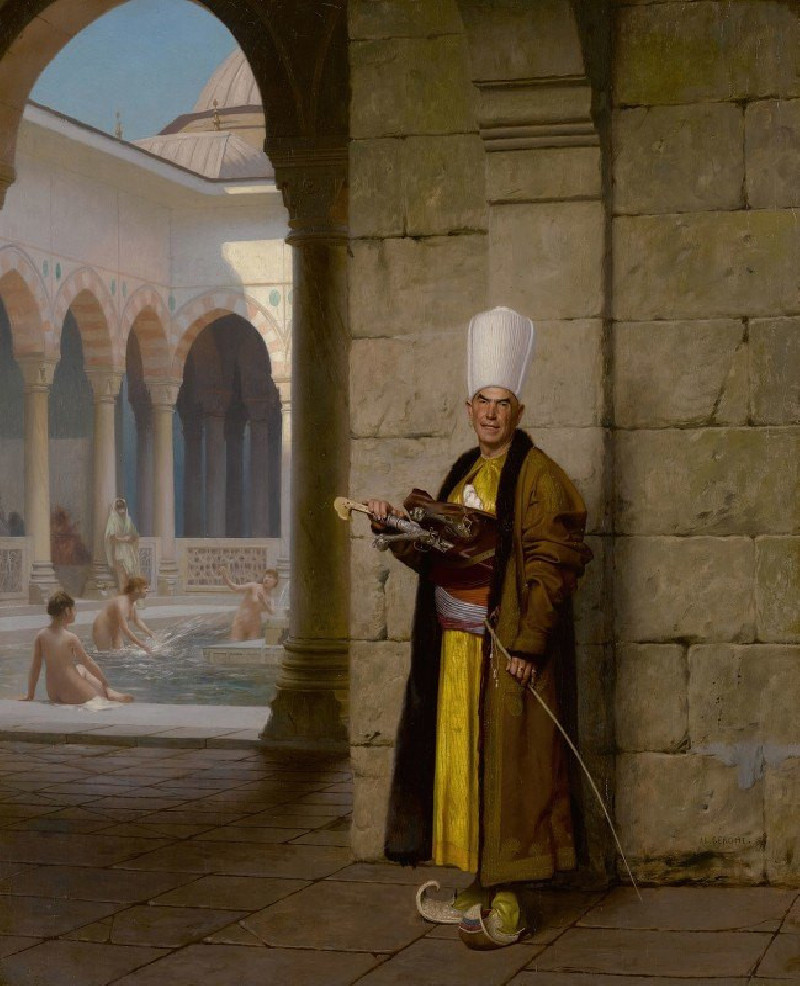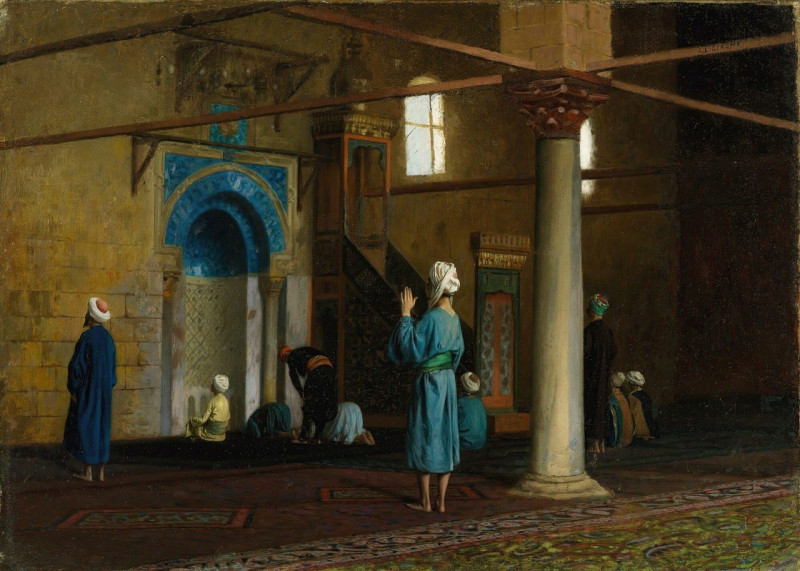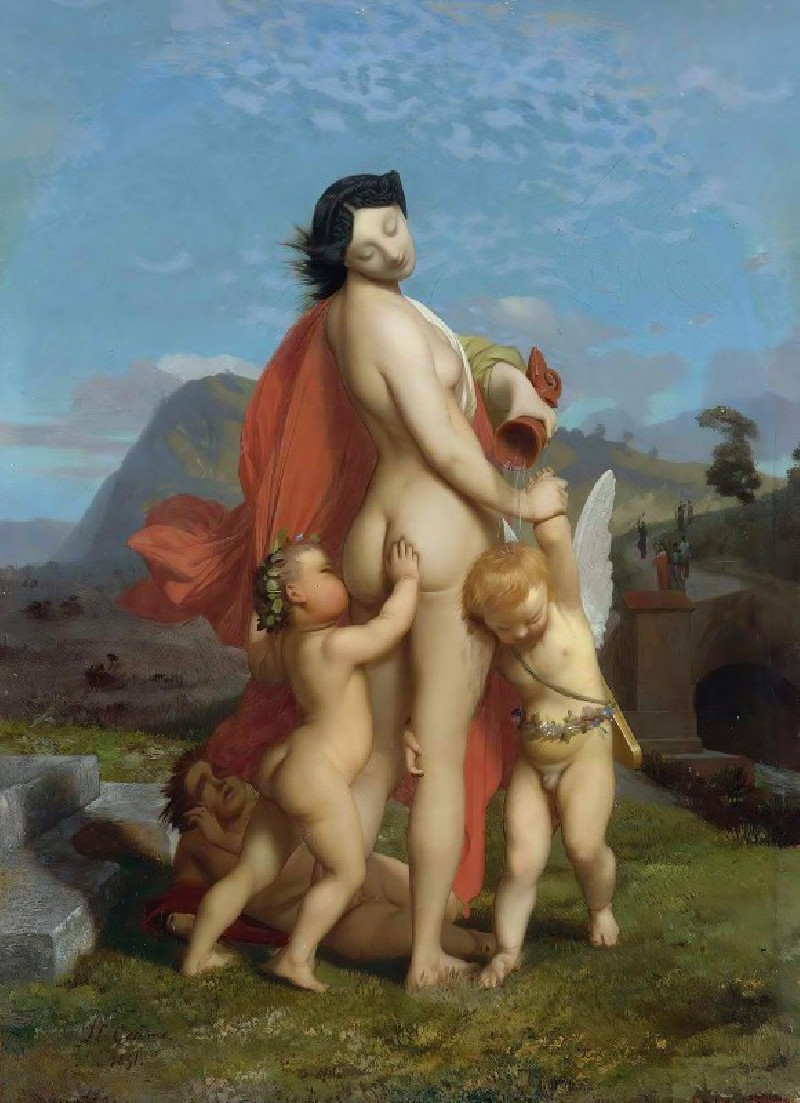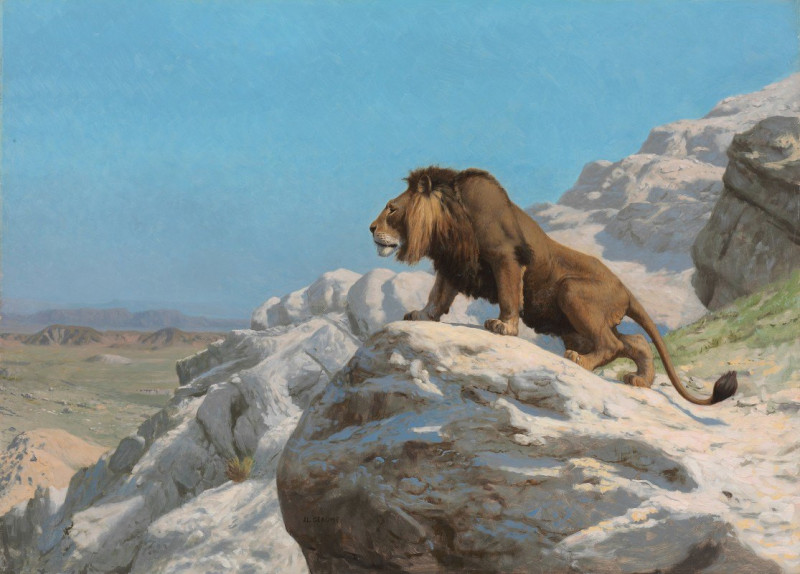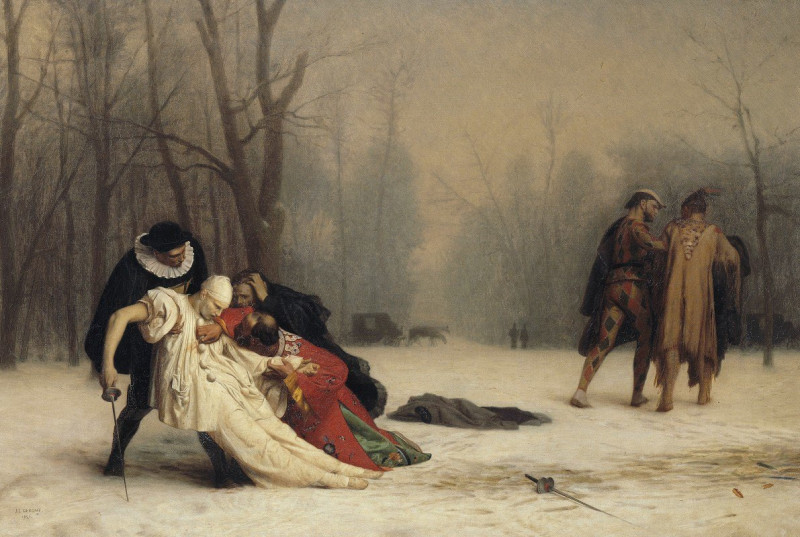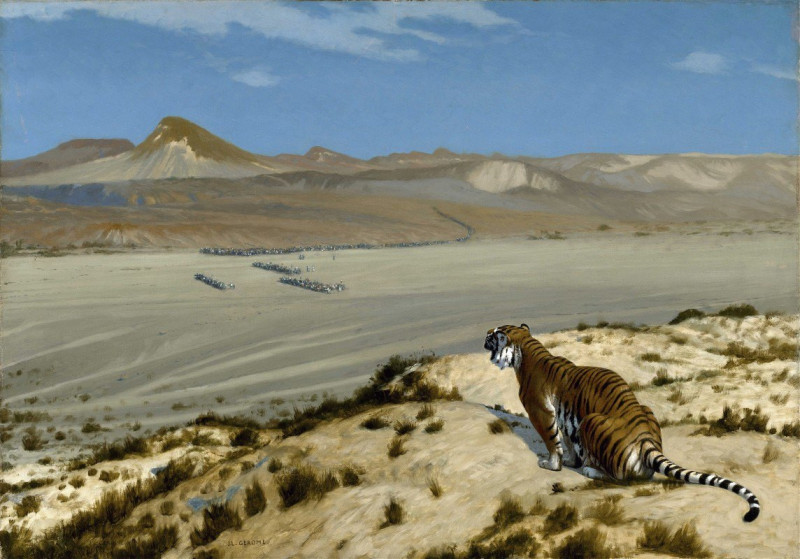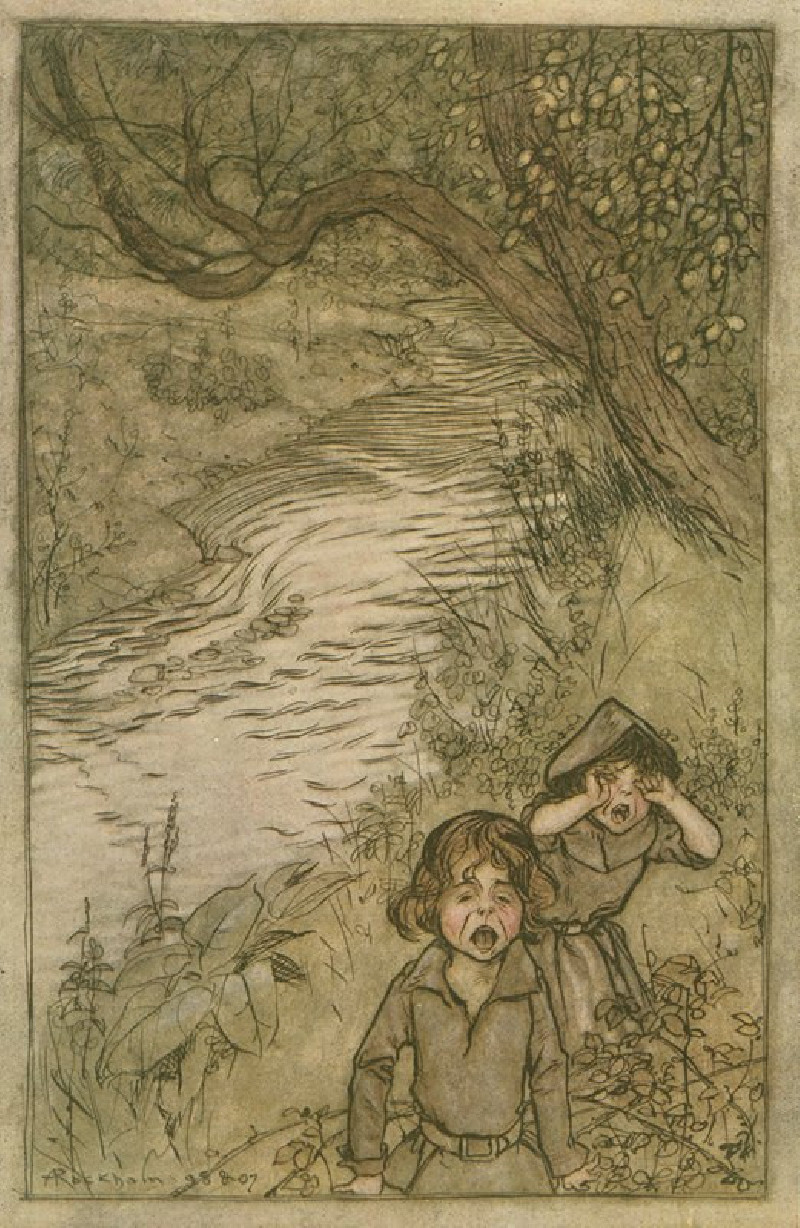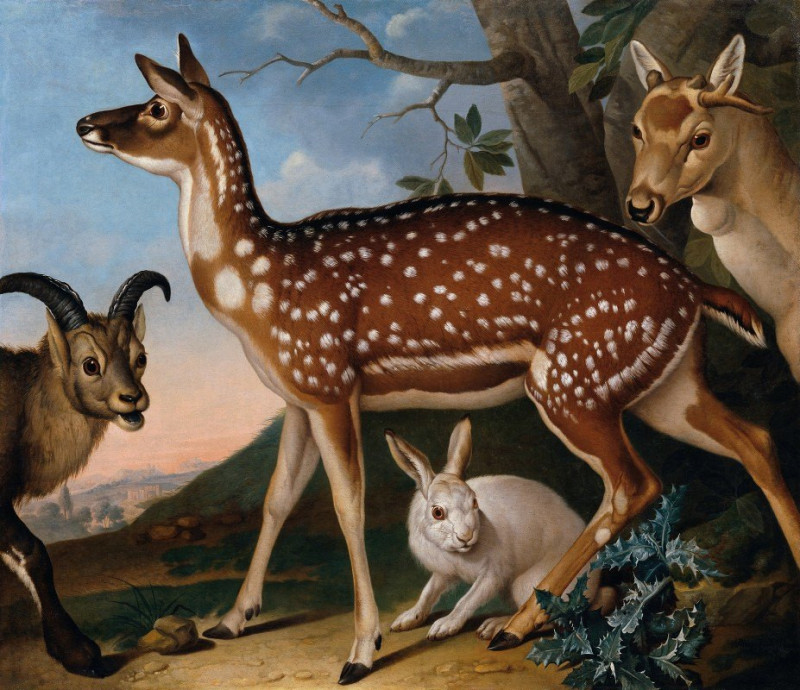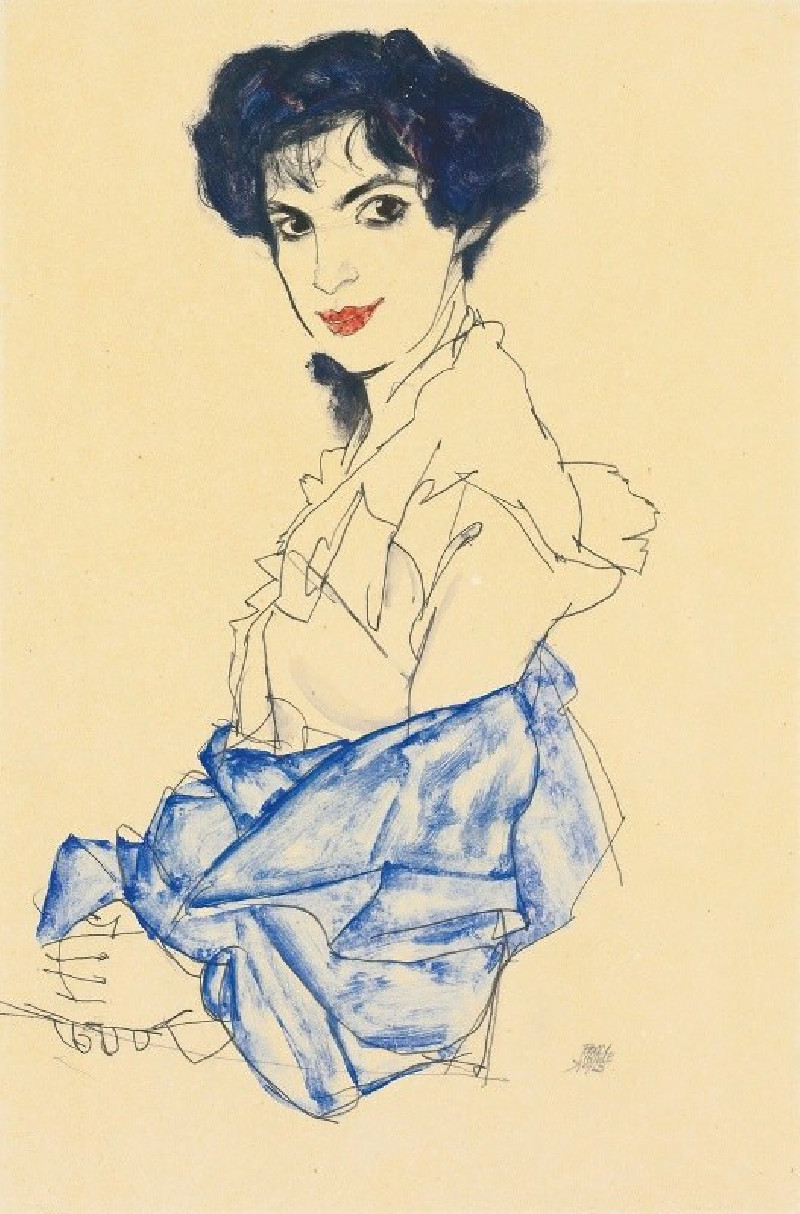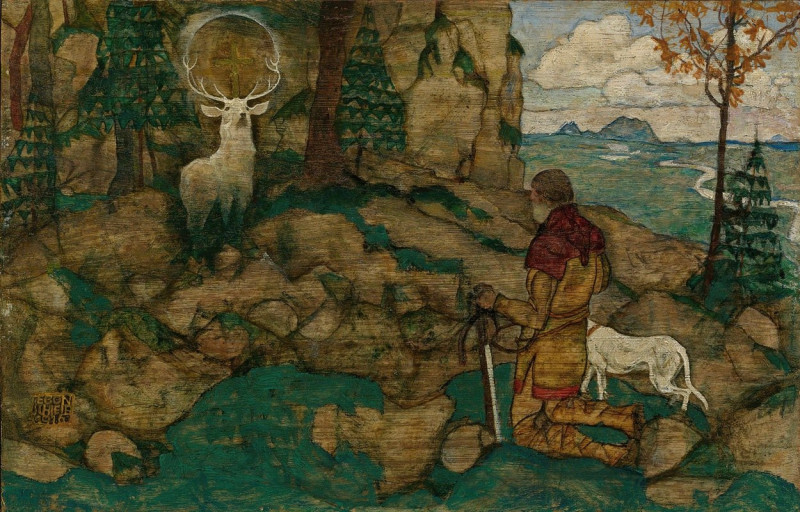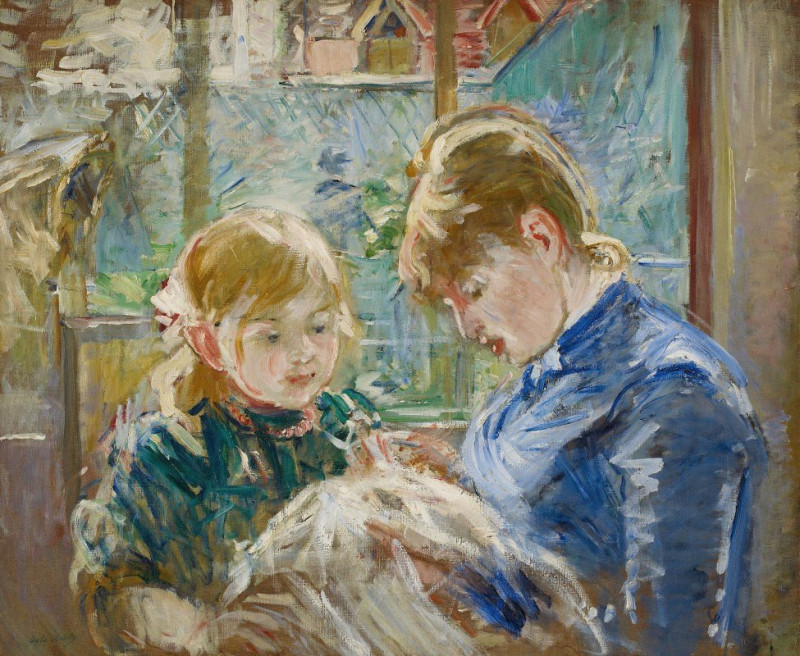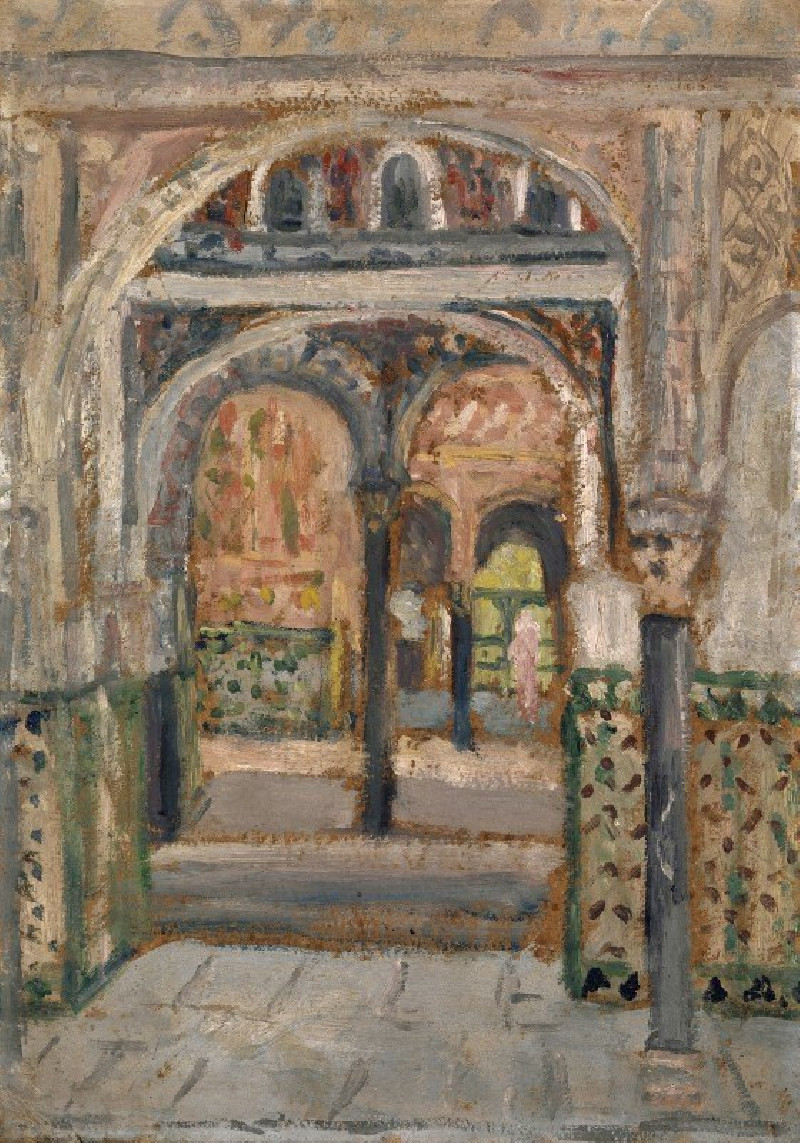The Slave Market (circa 1866)
Technique: Giclée quality print
Recommended by our customers
More about this artwork
Jean-Léon Gérôme’s painting “The Slave Market” vividly portrays a scene from a historical period, capturing the harsh realities of human exploitation. This painting, from around 1866, delves into the depths of human tragedy with a stark depiction of a slave market.The scene is set in what appears to be a Middle Eastern or North African locale, as evidenced by the architectural details and the attire of the figures. Central to the artwork is a young female figure, standing naked except for the drapery that slips from her hand, symbolizing her vulnerability and exposure. Her stance and expression convey a mix of resignation and despair as she is inspected by potential buyers.To her right, a man in white, possibly a slave trader, holds up her chin to inspect her, treating her not as a human being but as merchandise. On her left, another man in vibrant traditional garments, including a green robe and white turban, engages in negotiation or discussion, likely concerning her sale. His gesture towards her and his interaction with the man in white suggests a transactional conversation.In the background, various figures observe the scene, some indifferent and others possibly awaiting their fate, illustrating the normalization of such markets in the period portrayed. The architecture and the dress of the crowd add authenticity to the setting, enveloping the viewer in that historical moment.Gérôme’s work is not just a depiction of a scene but a critique, inviting the viewer to reflect on the cruelty and inhumanity of the slave trade. Through meticulous detail and emotive composition, "The Slave Market" confronts its audience with the brutal realities of human history, forcing a contemplation of the past and its ongoing impact on present societies.
Delivery
Returns
Jean-Léon Gérôme was a French painter and sculptor in the style now known as academicism. His paintings were so widely reproduced that he was "arguably the world's most famous living artist by 1880." The range of his oeuvre included historical painting, Greek mythology, Orientalism, portraits, and other subjects, bringing the academic painting tradition to an artistic climax. He is considered one of the most important painters from this academic period. He was also a teacher with a long list of students.



